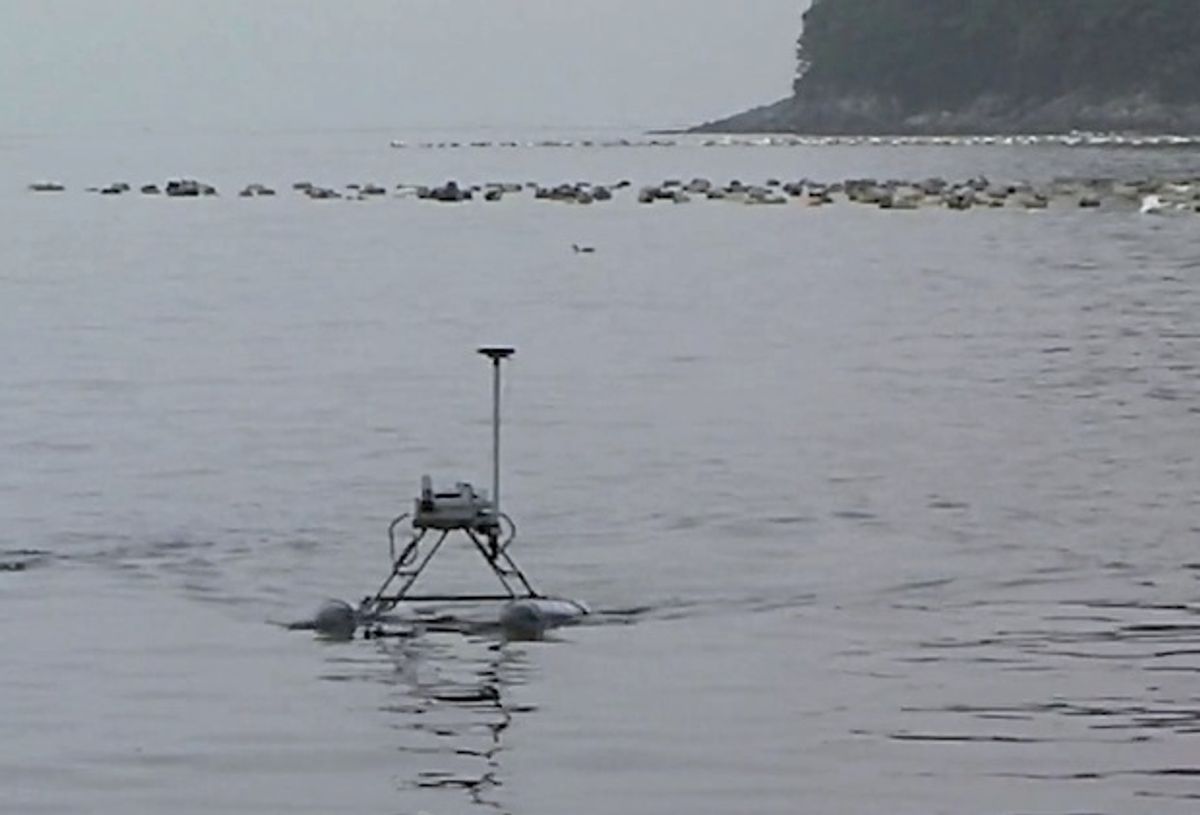Jellyfish* are serious business. If you get enough of them in one place, bad things happen. And we're not just talking about some mildly annoying stings, but all-out nuclear war. Obviously, we have to fight back. With ROBOTS.
In South Korea, jellyfish are threatening marine ecosystems and are responsible for about US $300 million in damage and losses to fisheries, seaside power plants, and other ocean infrastructure. The problem is that you don't just get a few jellyfish. I mean, a few jellyfish would be kind of cute. The problem is that you get thousands of them. Or hundreds of thousands. Or millions, all at once, literally jellying up the works.
Large jellyfish swarms have been drastically increasing over the past decades and have become a problem in many parts of the world, Hyun Myung, a robotics professor at the Korean Advanced Institute of Science and Technology (KAIST), tells IEEE Spectrum. And they aren't affecting just marine life and infrastructure. "The number of beachgoers who have been stung by poisonous jellyfish, which can lead to death in extreme cases, has risen," he says. "One child died due to this last year in Korea."
So Professor Myung and his group at KAIST set out to develop a robot to deal with this issue, and last month, they tested out their solution, the Jellyfish Elimination Robotic Swarm (JEROS), in Masan Bay on the southern coast of South Korea. They've built three prototypes like the one shown below.
The JEROS robots are autonomous, able to use cameras to locate jellyfish near the surface, Professor Myung explains. The sequence below shows how an on-board computer processes an image and identifies a jellyfish on the water.
Once the robots have found a group of jellyfish, they team up and float around in formation:
Due to the large number of jellyfish, developing some sort of catch-and-release mechanism is just not feasible, so the robots are equipped with hardware that would probably be considered inhumane to use on anything with a backbone. The following video is NSFLOJ (Not Safe for Lovers of Jellyfish):
Together, the JEROS robots can mulch approximately 900 kilograms of jellyfish per hour. Your typical moon jelly might weigh about 150 grams. You can do the math on that (or we can, it's about 6,000 ex-jellyfish per hour), but the upshot is that we're going to need a lot of these robots in order to make an appreciable difference.
Professor Myung says that, because the robots are designed to work cooperatively, adding more units shouldn't be a problem, and his team is already planning more tests in their efforts to deter the gelatinous invaders.
*Jellyfish are, of course, not fish, so we really should be calling them "jellies" or "sea jellies."
[ KAIST ]
Images: Hyun Myung/KAIST
Evan Ackerman is a senior editor at IEEE Spectrum. Since 2007, he has written over 6,000 articles on robotics and technology. He has a degree in Martian geology and is excellent at playing bagpipes.





